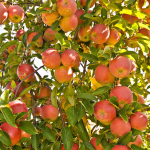Bark Beetle Outbreak Causing Widespread Pine Tree Death
We’re used to Californian invaders around here, but this time it’s different. Pine trees in Oregon and Washington are under attack from the California fivespined Ips bark beetle, and they’re dying in record numbers.
Forest fires and winter storms can weaken trees, making them more susceptible to insect infestations and subsequent death. This is nothing new, but the recent invasion of the California fivespined Ips bark beetle is reaching outbreak levels, and residents of the northwest are seeing more pine tree death than ever before. Dead ponderosa pine trees are scattered across the Eastern Columbia Gorge and into the Willamette Valley.
Due to these conditions, landowners should have their pines pruned and thinned sometime between October and January. This is also the perfect time to remove dying or dead pine trees that show evidence of being infested by these beetles.
Typically pruning work can be done as early as July, but since we are experiencing these outbreaks, it is recommended to wait until fall is in full swing. This is because fresh pruning wounds attract flying beetles in the spring and summer when insect populations are high. Normally, a healthy tree would be able to withstand a summer trim and few bugs, but in these last few summers the beetles have been overwhelming.
Adult bark beetles take advantage of stressed-out trees by laying eggs underneath the bark. Their larvae then feed on the tree’s living tissue. Normally, a healthy tree will naturally defend itself by “pitching” the beetles out with sap. But, a large unrelenting infestation can kill both young and old trees alike.
The California fivespined Ips was first detected back in 2010 in the Underwood area of Washington State, and until then it was unknown to occur at such damaging population levels in the Northwest. The Ips has now been documented throughout the gorge as well as the Portland, Eugene, and Salem, Oregon area, and as far North as Fort Lewis, Washington. They only feed on pines, but they don’t discriminate between ornamental and forest pines. And, as long as our area continues to suffer through forest fires and other tree-weakening issues, the outbreak is expected to persist.
To keep beetle populations from killing your healthy pines during these outbreaks, have them pruned only from mid-October through December. If you have pine trees whose needles have rapidly changed to yellow, orange, or red, it’s best to have them removed entirely. When pruning or removing infested trees, clean up all debris and chip or burn it before the spring when adult beetles will emerge. This is because the beetles within these trees will continue to grow and attack nearby pines unless the materials are actually destroyed or at least debarked. So, if you plan to use the felled tree for firewood, be sure to debark the logs and avoid stacking them near other pine stands.
For a free pruning or removal estimate, contact Inexpensive Tree Care at 503-504-4179 or email rod@inexpensivetreecare.com




